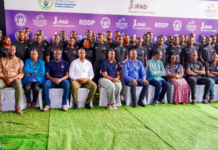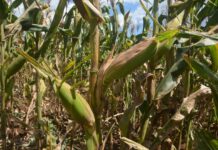
A newly published study has revealed key findings on fish health and antimicrobial resistance (AMR) in Lake Victoria. The cage aquaculture industry is growing rapidly to meet increasing demand for fish, but mass deaths of farmed tilapia have become increasingly common, threatening farmer livelihoods and the sustainability of this vital ecosystem.
Tailored approaches that reduce the incidence of fish disease require a more detailed understanding of its underlying causes, including water quality and infectious disease.
The research, which was carried out by Cornell University with Kenya Marine Fisheries Research Institute (KMFRI) and International Livestock Research Institute (ILRI), highlights the importance of best management practices and biosecurity measures that reduce the risk of fish disease and improve farm profitability. Biosecurity measures, such as proper disposal of dead fish, are strategies designed to reduce the introduction and spread of infectious diseases on the farm.
From 2020 to 2023, cage farmers reported more than 80 large-scale fish mortality events, resulting in losses exceeding 1.8 million tilapia. However, only 39% of these events were reported to public institutions, and just 17% of farmers attempted any form of treatment, often without diagnostic confirmation or veterinary input.
Cornell, KMFRI, and ILRI led cage farmer workshops in western Kenya focused on improved biosecurity and management practices, including: (1) proper disposal of dead fish through burning or burying/composting rather than tossing dead fish within the lake; (2) more dispersed siting of cages in deeper waters with better water quality; (3) reduced use of clogged cage nets that restrict water circulation; and (4) recognition of fish disease with prompt reporting to Kenyan institutions
Lead author Eric Teplitz, a veterinarian and PhD candidate at Cornell University, combined farmer surveys, a rapid-response investigation of a tilapia mortality event, active disease surveillance, and AMR testing of bacterial pathogens. ‘We identified a range of bacterial pathogens from a mass tilapia mortality event in Busia County and broader surveillance across the lake. Often these pathogens are opportunistic and secondary to stressors such as poor water quality; this underscores the importance of a One Health approach to environmental stewardship and disease management across terrestrial and aquatic ecosystems.’
This is the first known study in Lake Victoria to isolate and identify bacterial pathogens from a fish mortality event and to assess their antimicrobial susceptibility. Several of the identified bacterial strains demonstrated varying levels of resistance to commonly used antibiotics.
“Antimicrobial resistance is not just a human health concern, it’s also an emerging food systems challenge,” said Ekta Patel, CGIAR scientist at the International Livestock Research Institute. “Aquatic ecosystems are often overlooked as potential reservoirs for resistant bacteria and emerging pathogens. By strengthening surveillance, we can detect emerging threats early and generate evidence to guide timely interventions. At ILRI, we’re well-positioned to support research that identifies resistance genes and bacterial pathogens in aquatic ecosystems, providing critical insights to inform public health response.”
The findings present an opportunity to align aquaculture practices with national and regional priorities on AMR in aquaculture and sustainable fisheries development. They also point to the value of early surveillance, structured reporting mechanisms, and evidence-based decision-making to improve aquatic health outcomes.
Christopher Aura, Director of Freshwater Systems Research at the Kenya Marine and Fisheries Research Institute and a partner on the study, highlighted the national significance: “We are working on the need for better systems for data sharing and coordination between farmers, regulators, and research institutions. This study shows how locally grounded science can inform national biosecurity and best management practices’ enhancement, as well as AMR stewardship strategies.”
The study was guided by Kathryn Fiorella, principal investigator from Cornell University’s Department of Public & Ecosystem Health, who reflected on the broader implications: “Aquaculture has the potential to provide high-quality jobs and nutrition, but its viability depends on biosecurity. Disease will always be present in aquatic systems, but understanding and responding to it is critical to supporting aquaculture development and the surrounding aquatic ecosystems.”
The authors call for an integrated approach to aquaculture policy that prioritizes the responsible use of antimicrobials, meaningful engagement with farmers, and strengthened diagnostic capacity. They emphasize the need for greater investment in fish health systems to support food security and ensure the long-term sustainability of aquaculture in East Africa.







